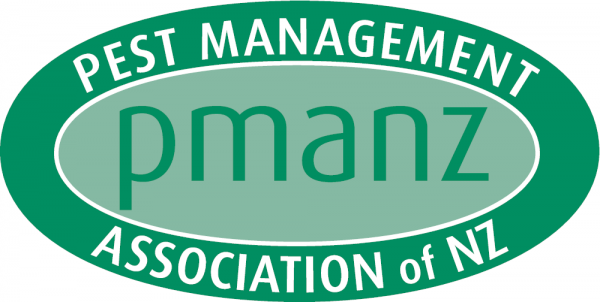Pest Information » Cluster Flies
CLUSTER FLY (Pollenia rudis)
INTRODUCTION
The common name reflects this species' habit of forming compact clusters of hibernating individuals, typically in wall voids or attics. Specifically, cluster flies occur wherever their host earthworm, Allolbophora rosea, occurs, which is usually in a well-drained sill-loam soil with grass cover.
RECOGNITION
Adults about 8 mm long, robust. Colour dark gray, non-metallic ; thorax lacking distinct stripes but with numerous short golden hairs(may be lost in older specimens;) abdomen with irregular lighter areas. Sluggish movements. With buckwheat honey odour when crushed. Adults overwinter in sheltered places, emerging in the spring to mate. Eggs are laid in soil cracks and hatch in about 3 days. The larvae are parasitoid upon the earthworm host, entering at almost any point along the body wall. Developmental time (egg to adult) varies from 27-39 days. There are usually 4 generations per year.
HABITS
As days shorten and the weather cools, cluster flies often enter structures to overwinter, sometimes travelling more than a kilometer to do so. They usually occupy attics and/or the between-wall voids of walls which receive the most sunlight, usually the north and possibly the east or west walls. Typically they use the same structure year after year. They do not multiply within structures. They can be a problem or nuisance in the autumn, winter, and/or spring; autumn when they enter to hibernate; on warm, sunny winter days; and again in the spring when they attempt to leave the structure. Actually, they can be stimulated by warmth to resume activity almost anytime. Sometimes it takes no more than the furnace to be turned on and thoroughly warm the inside of the structure to start activity, but it usually additionally requires a bright sunny day to warm the walls from the outside. Once stimulated, cluster flies seek light. This is why they usually come out around loose-fitting wall switches and outlets, ceiling fixtures, window and door frames , window pulleys, etc. Cluster flies can usually be found at windows crawling on the panes or frames, or around lamps or lights. They are sluggish in their movements in comparison to house flies. They give off a buckwheat honey odour and leave a greasy spot when crushed.

CONTROL
No attempt should be made to kill these insects in wall voids at any time because the bodies of dead insects attract dermestid beetles (larder beetles, carpet beetles, etc.). Dermestid larvae wander and will readily enter the living space, causing numerous complaints. Instead, wait until summer when all live over-wintering adults are out of the wall voids. Then follow the outside control given below. However, temporary relief is possible by using a vacuum and/or space sprays, and sealing interior entrances. Control begins outside. Reducing the outside population is impractical for cluster flies since their larvae breed in earthworms. Therefore, use of preventative physical and chemical barriers aimed at adults before they congregate and attempt to enter buildings is recommended. Physical barriers involve exclusion. Although total exclusion is probably not possible, all vents (roof, overhang, weepholes, etc.) should be screened with at least 16-mesh screening. Caulk around cable entrances, windows, doors, and overhangs. These steps should be taken in December or January. Preventative chemical barriers involve applying a highly repellent, long-lasting residual to all outside vertical walls and the adjacent overhang; microencapsulated pyrethroids or pyrethrins, or pyrethroid wettable powder formulations work best. This application is made just before the last seasonal generation of adults emerge. The timing of this treatment is crucial to its effectiveness. One application is required. If application is made earlier, pests may enter before frost and if made later, then pests may enter before application. If adults have already begun to congregate and attempt entry into buildings, it may be too late for preventative action. The best solution is physical removal with a good shop- type vacuum. Then treat the vertical walls as described above for preventative. Temporary but immediate indoor relief can be achieved by removal with a vacuum or by using space sprays in individual rooms. To prevent entry of more flies, seal the possible routes of entry. Use silicone caulk and/or foam to seal. Entry points Include around window pulleys (seal with tape or steel wool), window frames , door frames, baseboards, etc. For electrical outlets and switch boxes and heating duct and air return vents , remove the cover-plate, seal, and replace . For light fixtures and ceiling fans, remove the fixture to its base plate, seal, and replace. If cluster flies are in a false ceiling area, the population can be reduced by installing an electrocutor insect light trap (ILT); be sure to periodically empty the catch tray or glue board. An alternative is to install a continuously burning 60-watt bulb which attracts the flies , causes them to exhaust their stored food, and die right around the light; be sure to remove them with a vacuum. To speed the process, use old fashioned fly strips, glue boards, or other sticky surfaces which may be suspended from the uppermost surface of the false ceiling void near the light. Remove and replace these sticky surfaces when needed. To reduce the number of flies coming into a room from a false ceiling, seal all cracks through which light enters. Use duct tape or caulk. In elevator shafts, install a continuously burning 60-watt bulb located just above the pit floor. Again vacuum up dead flies.
Related Content
- Code of Practice for the Food Industry
- Using Pesticides Around the Home
- Stay safe when using Poisons around the home
- Advice for Vets about rodenticide poisoning
- Ants
- Bed Bugs
- Bees
- Black Beetle
- Black Field Cricket
- Brown Marmorated Stink Bug
- Click Beetle
- Cluster Flies
- Cockroaches
- Flies
- Mice
- Mosquitoes
- Rats
- Spiders
- Tropical House Cricket
- Wasps
